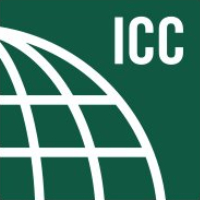
Significant changes to the 2018 I-Codes
The 2018 Significant Changes guides are available for the International Building, Residential, Fire, Plumbing, Mechanical and Fuel Gas Codes. This valuable series can help any code user save time by zeroing in on the most critical changes in the 2018 International Codes (I-Codes). The Code Council’s technical experts provide summaries, analysis and graphics for these changes making them clear and easy to understand.
2018 International Building Code
A modification to Section 904.14 (Aerosol Fire Extinguishing Systems) states that the installation, inspection, testing and maintenance of aerosol fire-extinguishing systems are now addressed through applicable references to Sections 901 and 904.4 of the International Building Code and NFPA 2010, as well as the system’s listing and manufacturer’s instructions.
NFPA 2010 Standard for Fixed Aerosol Fire Extinguishing Systems was first published in 2006. Since then, the International Code Council Evaluation Service (ICC-ES) has published the ICC-ES Acceptance Criteria for Fixed Condensed Aerosol Fire-Extinguishing Systems, AC432. In 2014, ICC-ES published evaluation report ESR-3230 for an aerosol fire-extinguishing system in compliance with the 2009 and 2012 editions of the International Fire Code as an alternative to International Fire Code Section 904.9, Halon Fire-extinguishing Systems. The International Building Code now addresses the installation, inspection, testing and maintenance of aerosol fire-extinguishing systems through applicable references to Sections 901 and 904.4 of the IBC and NFPA 2010, as well as the system’s listing and manufacturer’s instructions.
Click here to read the full significant change.
2018 International Fire Code
A modification to Section 1031.4 (Exit Signs in Existing Buildings) states that the application of exit sign requirements in existing buildings has been clarified for both installation and maintenance.
The previous language had been interpreted to require existing buildings to install exit signs to meet the provisions of Section 1013 in the 2015 International Fire Code. This meant that every time the requirements were modified in Section 1013, all buildings would need to comply with those revised requirements. Since Section 1031 covers maintenance, the original intent was to require that the exit signs were maintained.
To correct this language, the revision clarifies that existing exit signs must be maintained in accordance with the original code that required their installation and any additional requirements found in Section 1104.
Click here to read the full significant change.
2018 International Residential Code
An addition to Section R324.6.2.2 (Solar Panels near emergency escape and Rescue openings) states that rooftop-mounted photovoltaic solar energy panels and modules are not permitted to be installed directly below emergency escape and rescue openings.
As covered in Section R310, an emergency escape and rescue opening is required in every bedroom, basement and habitable attic to provide occupants a way out of the dwelling in case fire, smoke or other emergency blocks the means of egress path. The code also provides minimum net dimensions for the escape opening as well as operational criteria for windows and coverings. To ensure a path from the escape opening to a public way or yard that opens to a public way, the International Residential Code spells out window well and area well requirements and requires a path not less than 36 inches high when the opening is under a deck or porch. Similarly, new language in the photovoltaic solar energy provisions is concerned with providing a safe path for the occupant climbing out of an emergency escape and rescue opening that is above a roof. Installing a photovoltaic solar panel below the escape opening would cause an unsafe condition in an emergency situation. The required clear path must be at least 36 inches wide to provide emergency escape from the roof as well as emergency access to the roof as stated in Section R324.6.
Click here to read the full significant change.
2018 International Plumbing Code
A clarification to Section 308.6 (Sway Bracing for Drainage Piping) states that additional information clarifies where sway bracing is needed for drainage piping.
The piping sway discussed in this section is the result of drainage flow significantly changing direction because of turns in horizontal piping. The forces on the turning fitting (the elbow) cause the upstream piping to move axially. These movements can become amplified in the piping downstream of the fitting and causing the piping to sway (side-to-side motion). Such sway action could cause problems with piping joints and hanger systems. A change in horizontal direction that is 45 degrees or less is not considered to be significant enough to cause the piping system to move. Although the required sway bracing could also serve as a seismic support, as might be required in Section 308.2, the purpose of Section 308.6 is only for resisting flow-induced movements.
Click here to read the full significant change.







